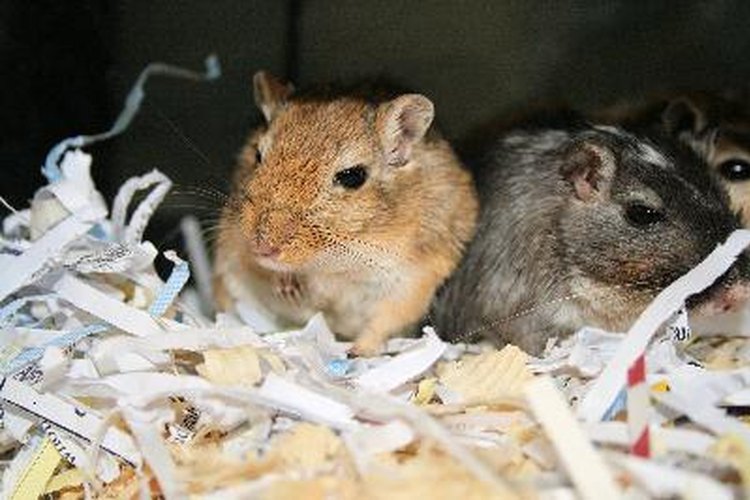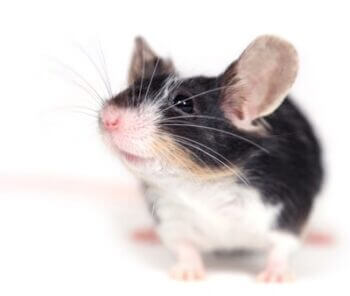When it comes to choosing a small pet, the options are endless. But two of the most popular and beloved choices are gerbils and hamsters. These tiny creatures have captured the hearts of pet lovers all around the world with their cuteness, playfulness, and unique personalities.
However, deciding between a gerbil and a hamster can often be a tough decision. Both offer similar companionship and entertainment, but they also have distinct differences in terms of behavior, care requirements, and physical characteristics.
In this article, we will dive deep into the world of these adorable rodents, unraveling the unique quirks and traits that make them special. So if you’re torn between these two furry friends, keep reading to find out which one is the perfect fit for you.
>> READ MORE:
- Gerbil vs. Hamster A Comprehensive Comparison
- The Hamster Ball Conundrum Are They Fun or a Fiasco?
- Choosing the Perfect Name for Your Female Hamster
- Black Hamster Names A Guide to Finding the Perfect Moniker
Physical Differences: Size, Appearance, and Tail

One of the first things that come to mind when comparing gerbils and hamsters is their physical differences. While both may fall under the category of “small pets,” there are significant variations in size, appearance, and even tail structure between the two species. Let’s take a closer look at these attributes and how they set gerbils and hamsters apart.
Size
When it comes to size, there is no denying that gerbils are slightly larger than hamsters. On average, an adult gerbil can grow up to 4-5 inches in length, while a hamster typically measures around 2-3 inches. This size difference may not seem significant, but it can make a noticeable impact on their overall appearance. Gerbils tend to look more elongated, with a slender and sleeker body, while hamsters have a rounder and stockier build.
Appearance
Another notable difference between gerbils and hamsters is their appearance. Gerbils have a distinct, rat-like appearance with long, furry tails, while hamsters have a more compact and rounded body shape. Gerbils also have a pair of large, black eyes that give them an alert and curious expression. On the other hand, hamsters have smaller eyes and often have a more calm and docile look.
Tail
One of the most striking differences between gerbils and hamsters is their tail structure. Gerbils have a long, thin, and bushy tail, which they use for balance and communication. It’s also worth noting that unlike rats or mice, gerbils do not have prehensile tails, meaning they cannot hold onto objects with it. In contrast, hamsters have short, stubby tails that are barely visible, making them almost look like they don’t have one at all. This difference in tail length plays a significant role in their behavior and communication, which we will discuss further in the next section.
Habitat and Housing Requirements

The natural habitats of gerbils and hamsters also play a crucial role in understanding their care requirements and behavior. Both species come from different regions, with varying environmental conditions, which have shaped their innate characteristics and preferences. Understanding their habitat and housing needs is essential to ensure that your pet stays healthy and happy.
Gerbils
Gerbils are native to arid regions of Asia and Africa, where they have adapted to live in harsh conditions with limited water and food resources. In the wild, gerbils are burrowing animals, living in complex underground systems with their families. These burrows serve as both shelter and protection from predators. As such, gerbils require a spacious cage with plenty of room for digging, tunneling, and exploring. A wire cage with a solid bottom is ideal for gerbils, as they can chew through plastic or wooden enclosures quickly. The minimum recommended cage size for a pair of gerbils is at least 12×24 inches, but larger cages are always better.
Inside the cage, you should provide plenty of bedding material made from non-toxic materials such as paper or aspen shavings. This allows your gerbil to dig and burrow, which is a natural instinct for them. You can also add tunnels, cardboard boxes, and other hiding spots to enhance their environment further. Additionally, it’s crucial to keep your gerbil’s cage in a quiet area away from direct sunlight, drafts, and other pets that may cause stress.
Hamsters
Unlike gerbils, hamsters have a more varied distribution, with different species inhabiting various regions around the world. However, they are primarily found in dry, grassy areas, where they live in underground burrows. In captivity, hamsters require similar housing setups to their wild counterparts. They need spacious cages with good ventilation, preferably made of glass or plastic to prevent the risk of escape or injury. The minimum recommended cage size for a hamster is 360 square inches, but larger cages are highly recommended to provide enough space for exercise and exploration.
The bedding requirements for hamsters are similar to gerbils, with paper or aspen shavings being the safest options. However, unlike gerbils, hamsters are known to hoard food in their bedding, so it’s essential to check and clean the cage regularly to prevent any mold or bacteria growth. Adding a few hides, tunnels, and chew toys can also help keep your hamster mentally stimulated and happy.
Social Behavior and Temperament
One of the significant differences between gerbils and hamsters is their social behavior and temperament. Gerbils are highly social animals, living in large groups in the wild. This inherent sociality makes them unique among rodents and significantly sets them apart from hamsters, who tend to be solitary creatures.
Gerbils
In the wild, gerbils live in large family groups of up to 20 individuals, consisting of both males and females. They are highly social animals, spending most of their time grooming, playing, and foraging together. This social behavior is an integral part of a gerbil’s life, and it also translates to their behavior in captivity. As such, it’s recommended to keep gerbils in same-sex pairs or small groups to ensure they have company and companionship. When kept alone, gerbils can become stressed and may exhibit destructive behaviors, such as chewing on their cage bars or excessively digging, as a way to release their pent-up energy.
Gerbils are known for their friendly and curious personalities. They are not afraid to explore their surroundings and are known to interact with their owners, often climbing onto their hands and shoulders. Gerbils are also relatively easy to tame, making them great pets for older children. However, it’s essential to handle them gently and consistently to maintain their trust. It’s also worth noting that gerbils may occasionally nip if they feel threatened, but this behavior is rare and easily avoidable with proper handling.
Hamsters
In contrast to gerbils, hamsters are solitary animals who prefer to spend most of their time alone. In fact, hamsters are known to be territorial and may become aggressive if housed with other hamsters. This behavior stems from their natural instinct to protect their territory and resources, which includes their food, bedding, and hiding spots. As such, it’s recommended to keep hamsters separately, either in individual cages or divided enclosures.
While they may not be as social as gerbils, hamsters can still form strong bonds with their owners. However, they require more patience and gentle handling to gain their trust. Hamsters are known to be timid and may bite if they feel threatened or scared. They also tend to be most active at night, so it’s essential to respect their natural sleeping patterns and avoid handling them during the day when they are trying to rest.
Lifespan and Care Considerations

Another important aspect to consider when choosing between a gerbil and a hamster is their lifespan and care requirements. As with any pet, proper care is crucial to ensure a long and healthy life for your furry friend.
Gerbils
On average, gerbils have a lifespan of 3-4 years, but with proper care, they can live up to 5 years. To keep your gerbil healthy and happy, it’s crucial to provide them with a well-balanced diet, a clean and spacious living environment, and regular veterinary check-ups. Gerbils are relatively hardy animals, but they are susceptible to certain health conditions, such as respiratory infections, dental issues, and gastric problems. As such, it’s essential to monitor your gerbil’s behavior and appearance for any signs of illness and address them promptly.
Hamsters
Hamsters, on the other hand, have a shorter lifespan, with an average of 2-3 years. However, some species, like the Roborovski and Chinese hamsters, can live up to 4-5 years. Similar to gerbils, hamsters require a balanced diet, clean housing, and routine vet check-ups to stay healthy and thrive. They are also prone to certain health issues, including wet tail (a bacterial infection), respiratory infections, and tumors. Regular observation and prompt medical attention can help prevent these issues and ensure your hamster lives a happy and fulfilling life.
Activity Levels and Exercise Needs

Gerbils and hamsters are both known to be active and energetic creatures, but their levels of activity and exercise needs differ slightly.
Gerbils
Gerbils are naturally active creatures that require plenty of exercise to stay healthy and happy. In the wild, they can travel up to 3 miles per night in search of food and resources. As such, it’s crucial to provide your gerbil with opportunities for daily exercise and enrichment. A large, spacious cage with plenty of bedding material is essential, but you should also give them time outside of their cage to run and play. Gerbils are natural diggers, so having a designated play area with sand or soil can also provide them with an outlet for their digging behavior. You can also add toys, tunnels, and chew blocks to keep them mentally stimulated and entertained.
Hamsters
Hamsters are generally less active than gerbils, but they still require exercise to prevent obesity and boredom. Unlike gerbils, who are known to burrow and dig, hamsters are more likely to climb and explore. As such, their cage should have plenty of vertical space, with multiple levels and platforms for climbing and resting. You can also add toys, such as wheels, tunnels, and rope ladders, to keep your hamster mentally stimulated and physically active. Additionally, providing them with a safe, enclosed space outside of their cage to explore can also be beneficial.
Dietary Differences and Feeding Habits
Feeding your pet a proper and balanced diet is vital for their overall health and well-being. Both gerbils and hamsters have specific dietary requirements that you should consider when choosing between them.
Gerbils
Gerbils are omnivores, meaning they eat both plant and animal matter. In the wild, they primarily feed on seeds, grains, fruits, and insects. In captivity, you can feed your gerbil a high-quality rodent mix or pellets supplemented with fresh vegetables and occasional treats like fruits and nuts. It’s crucial to avoid feeding your gerbil any sugary or fatty foods as they can lead to obesity and other health issues.
Hamsters
Hamsters are also omnivores, but their diet is primarily herbivorous. In the wild, they feed on seeds, grains, and plants, with occasional insects. In captivity, you should provide your hamster with a commercial hamster mix, supplemented with fresh vegetables and occasional treats. However, unlike gerbils, fruits should be given rarely to hamsters as they are more prone to diabetes. It’s also essential to avoid feeding your hamster any citrus fruits, as it can cause digestive problems.
Conclusion
In conclusion, both gerbils and hamsters make fantastic pets, each with their own unique set of qualities and characteristics. Choosing between them ultimately comes down to your preferences, lifestyle, and ability to provide proper care. If you’re looking for a social, active, and curious pet, then gerbils may be the perfect choice for you. On the other hand, if a more solitary, calm, and low-maintenance pet is what you seek, then a hamster may be a better fit. Whichever you choose, one thing is for sure: these tiny friends will undoubtedly bring joy and love into your home.

